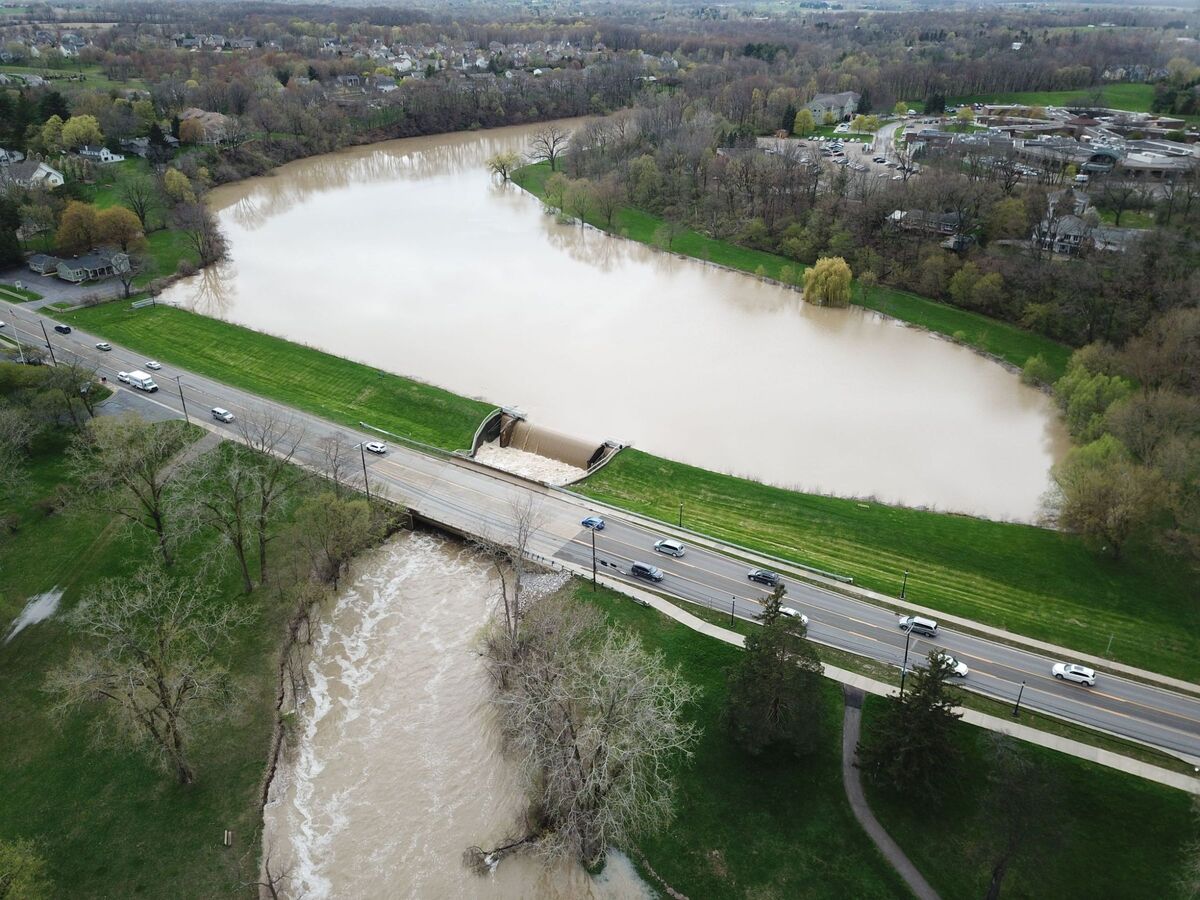Image


Should the Saline River be dammed in the City of Saline? That question was put to Saline City Council at Monday's meeting as Spicer Group presented the findings of its Mill Pond dam inspection and study.
The study was commissioned last year in the wake of disastrous flooding after dam breaks in Midland County after Saline City Council learned that routine inspections of Saline's dam were not being conducted in accordance with state rules.
The Spicer Group study seemed to indicate the Mill Pond dam was in the kind of shape one might expect for a dam of its age. The appears to meet capacity issues for a 200-year storm. The city has already begun working on several of the key problems found in the dam. On the other hand, the dam is old and there are potentially very expensive maintenance issues in the not too distant future. The expenses are serious enough that the city may want to heed the state's advice and consider whether or not the city even needs to dam the river anymore, said Richard Graham, an associate with Spicer Group.
In Graham's report, he noted that the dam's design meets the requirements for a 200-year storm. In fact, the report said the dam meets the requirements for a 200-year storm using standards that more closely match today's rainfall patterns.
"The bottom line of our calculation review is it does meet the state's requirements for capacity," Graham said.
Spicer Group's report made the following recommendations:
City staff have already been to the site to repair loose railings and install more guard rail. The shores around the dam also suffer from erosion commonly seen. Graham said there's no evidence the problem has significantly worsened.
Graham reported said there was cracking in some of the concrete in the dam.
"Nothing jumped out as a huge structural issue when we were out there," Graham said. However, he said, he recommended the city have a more in-depth analysis of the concrete and its structural strength.
Graham said the two "heavy hitters" among the Spicer Group's recommendations were the updating of the emergency action plan and an updating of the maintenance and operation plan.
Saline is required by the state to have an emergency action plan.
"It's your plan of attack if you have an emergency with the dam," Graham said. "You would grab your plan and it has your list of contacts of who needs to be notified - specifically who needs to be notified downstream."
Graham said the city's emergency action plan contained out-of-date contact information. City engineer Jeff Fordice said the city submitted an outdated copy to the Spicer Group and that the city's actual plan is up to date.
Graham noted that both the operation plan and emergency plan reference a level sensor no longer in operation. The city is working on a new flow leveling monitor so it can get actual levels in real-time.
Currently, city police officers monitor the dam during storms. Then, if the city deems levels are visiting too high, DPW workers open the gates.
Graham said the city should be thinking about its long-term plan for the dam. He said the state of Michigan recently released a report from the dam safety task force formed after the failures in Midland County.
"They're really looking at reviewing dams for the necessity of the dam to be there. Does this area really need a dam? They're trying to get rid of dams that aren't necessary anymore," Graham said. "I think that the city is in a good spot now to start thinking about how you have an aging dam that's getting older and older every day, so what's the city's long-term plan with this?"
If the city wants to maintain its dam for recreational purposes, it may want to consider mechanizing the dam rather than have city water treatment plant employees standing in a storm turning a big wheel for hours. But mechanizing the gates is costly, Graham said.
"That leads me back to my question. What are the long-term plans for the structure? You can have a hundrd- thousand-dollar-plus investment. In 10 years, you might have new regulations from the state and might want to consider moving the dam after spending $100,000," Graham said.
Councillor Jim Dell'Orco suggested council seriously consider removing the dam.
"If we're evaluating this from the longterm outlook, making investments in a structure that's neither necessary nor sufficient, it may not be prudent," Dell'Orco said. "And thinking about this in terms of how to better leverage one of Saline's greatest assets along the Saline River and with those two parks, we've discussed the non-motorized paths where we could connect the two parks underneath Michigan Avenue. There might be a lot of opportunity to evaluate what Saline could look like if this structure didn't exist and whether or not that's a benefit to our community."
Councillor Janet Dillon asked what it would look like if the dam was removed.
Engineer Fordice said the pond would go away and instead the river would look more like it does in Curtiss Park.
"But to get to that phase, there is a lot of steps involved in dam removal and a lot of studies and costly construction," Fordice said.
Councillor Dawn Krause asked Graham if what he saw in Saline seemed in line with what he saw in other towns.
"It's pretty typical of a dam of its age," Graham said.
Mayor Brian Marl said the city council could likely discuss its long-term plans for the dam at a future meeting.